How To Make Wisdom Tooth Pain Go Away

What Is Wisdom Tooth Pain?
Wisdom tooth pain is a common dental issue that many people experience at some point in their lives. Wisdom teeth, also known as third molars, are the last set of teeth to emerge in the back of the mouth, typically between the ages of 17 and 25. While some people have enough space in their mouth to accommodate these new teeth, others may experience discomfort and pain as the wisdom teeth have difficulty pushing through the gums.
If you are experiencing a throbbing or irritating pain coming from the back of the mouth and you have not had your wisdom teeth removed, you might be experiencing wisdom teeth pain. Before you contact a Toronto dentist to examine your wisdom teeth, there are some things you should know as a patient:
- Why Do I Have Wisdom Tooth Pain?
- Signs and Symptoms of Wisdom Tooth Pain
- Treatment Options For Wisdom Tooth Pain
- How To Prevent Wisdom Tooth Pain?
- Managing Wisdom Tooth Pain Until You Can See The Dentist
If you have questions about Wisdom Tooth Pain or other dental problems, please contact us for more information.
Why Do I Have Wisdom Tooth Pain?
There are several reasons why you may experience wisdom tooth pain:
- Impacted Wisdom Teeth – Sometimes, wisdom teeth don’t have enough room to fully emerge and become impacted, meaning they are only partially emerging from the gums, causing pain and discomfort.
- Gum Infection – When wisdom teeth partially emerge, they can create a flap of gum tissue that easily traps food and bacteria and is difficult to keep clean, leading to gum infection also known as pericoronitis.
- Cavity or Decay – Wisdom teeth are just as susceptible to decay and cavities as other teeth, if not more susceptible due to its location. A dental cavity can cause significant pain and discomfort.
It’s important to note that not everyone will experience wisdom tooth pain, and some people may not even have wisdom teeth at all. If you are experiencing pain or discomfort in your mouth, it’s best to schedule an appointment with your dentist to determine the cause and appropriate treatment. For further inquires about Wisdom Tooth Pain, please contact us.
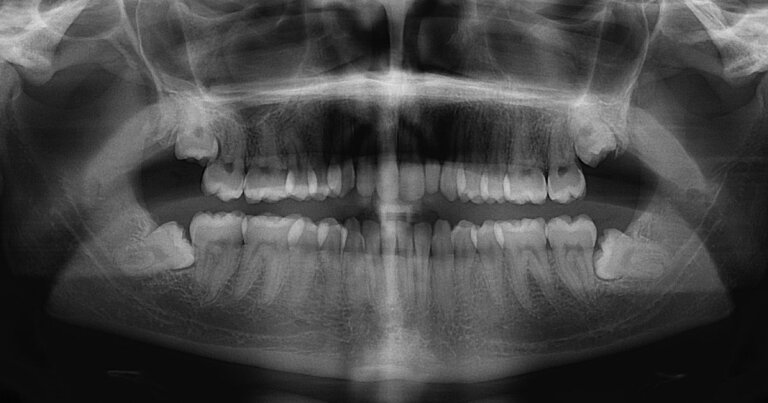
Signs and Symptoms of Wisdom Tooth Pain
If you’re experiencing pain or discomfort in the back of your mouth, you may have wisdom tooth pain. Here are some signs and symptoms to look out for:
- Tooth Pain Or Discomfort: This is the most common symptom of wisdom tooth pain. You may feel pain in the back of your mouth, near the affected tooth.
- Gum Swelling: If your wisdom tooth is impacted or infected, you may experience swelling in the gums or cheek immediately around the wisdom tooth.
- Redness: Inflamed gums around the wisdom tooth can appear red and irritated.
- Bleeding: If your gums are inflamed, they may bleed when brushing or flossing.
- Bad Breath: Bacteria buildup around impacted wisdom teeth can cause bad breath.
- Headaches: In some cases, wisdom tooth pain can lead to headaches and earaches.
- Limited Mouth Opening: Infection and swelling can make it difficult to open your mouth wide.
- Tender Lymph Nodes: If you notice there are swollen lumps around your head and neck that are painful to touch, these are inflamed lymph nodes as a result of bacterial infection, possibly originating from an infected wisdom tooth.
- Pus Or Bad Taste In The Mouth: If you notice there is a yellow or green coloured exudate coming from the back of the mouth that has a foul taste, this could be pus or an infection around the wisdom tooth.
- Fever: In some cases, prolonged and unaddressed wisdom teeth infection can lead to systemic infection (body temperature over 38 degrees Celsius).
If you’re experiencing any of these symptoms, it’s important to schedule an appointment with your dentist as soon as possible. Early diagnosis and treatment can prevent further complications and alleviate your pain. If you have further questions about signs and symptoms related to Wisdom Tooth Pain, please contact us.
Treatment Options for Wisdom Tooth Pain
The best thing to do if you think you have wisdom tooth pain, swelling and infection is to seek the help of a dentist. The dentist will first take an x-ray image to visualize the wisdom tooth problem and arrive at a proper diagnosis before recommending treatment. In almost all cases, the best and only treatment option is wisdom tooth removal. At Atlas Dental in Toronto, we are able to provide an antibiotic prescription and same day wisdom tooth removal surgery with oral conscious sedation. If you have further questions about Wisdom Tooth Pain treatment options, please contact us.
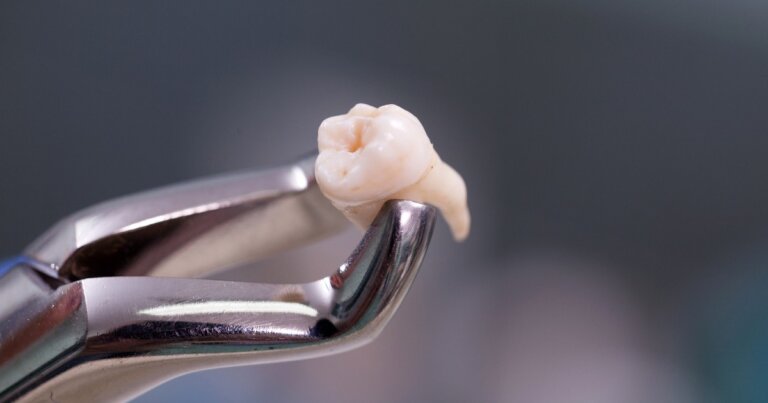
How to Prevent Wisdom Tooth Pain?
While not all wisdom tooth pain can be prevented, there are some steps you can take to reduce your risk of developing this common dental issue:
- Maintain Good Oral Hygiene – Brush your teeth twice a day and floss daily to remove bacteria and plaque from your teeth and gums.
- Regular Dental Checkups – Visit your dentist regularly for checkups and cleanings. This can help catch potential issues before they become serious problems.
- Monitor Your Mouth – Keep an eye on the back of your mouth for any signs of emerging wisdom teeth or other issues.
- Limit Sugary Foods and Drinks: Sugary and acidic foods and drinks can contribute to tooth decay and erosion. The worst culprits include soda pop, coffee with sugar, citrus fruits and drinks, candy, dried fruits and potato chips. Limit your intake of these sugary foods and drinks, or brush your teeth after consuming them.
- Consider Prophylactic Extraction – In some cases, your dentist may recommend preemptively removing wisdom teeth to prevent potential complications.
By following these tips, you can reduce your risk of experiencing wisdom tooth pain and other dental issues. If you’re experiencing any symptoms of wisdom tooth pain, schedule an appointment with your dentist as soon as possible for an evaluation and appropriate treatment. If you have further questions about Wisdom Tooth Pain prevention, please contact us.
Managing Wisdom Tooth Pain Until You Can See the Dentist
If you’re experiencing wisdom tooth pain and can’t see a dentist right away, there are some steps you can take to manage your symptoms:
- Use Over-the-Counter Pain Medication: Over-the-counter pain medication, such as Advil (ibuprofen) or Tylenol (acetaminophen), can help relieve toothache pain and reduce inflammation. Follow the instructions on the label and do not exceed the recommended dose. Unless you have a health condition that prevents you from taking either ibuprofen or acetaminophen, the absolute maximum dose that I recommend patients take for the worst dental pain is 600 mg ibuprofen combined with 1000 mg acetaminophen every 4 to 6 hours.
- Keep the Affected Tooth As Clean As Possible: Keeping the affected wisdom tooth clean can help prevent further infection and alleviate some of the pain. Brush and floss gently around the tooth. Rinsing your mouth with warm salt water or mouthwash can help reduce infection, inflammation and alleviate toothache pain. You can buy any mouthwash available at your pharmacy or health foods store. Alternatively, you can mix a teaspoon of salt in a cup of warm water and swish the solution around your mouth for about 30 seconds before spitting it out.
- Apply a Cold Compress: Placing an ice pack or cold compress on the affected area can help reduce swelling and numb the pain. Wrap the ice pack in a cloth and apply it to your cheek for 15-20 minutes at a time.
- Soft Foods: Stick to soft foods like soup, yogurt, or mashed potatoes to avoid aggravating the affected area. When eating food, favor the side that is not causing you pain so to avoid further irritating the affected side. Food, bacteria and any other debris will not get impacted into the area of your wisdom tooth.
It’s important to note that these steps are only temporary measures to manage pain and discomfort until you can see a dentist. If your symptoms persist or worsen, make sure to schedule an appointment with your dentist as soon as possible for appropriate treatment. If you have further questions about Wisdom Tooth Pain management and treatment options, please contact us.
We also think you’ll like…
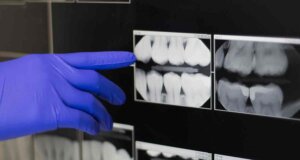
Digital Dental X-Rays
Digital Dental X-Rays What Are Digital Dental X-Rays? Dental X-rays have been an essential tool in dentistry for decades, aiding dentists in detecting various oral
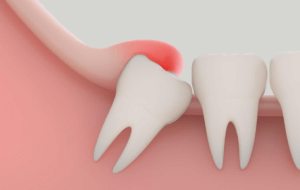
Pericoronitis
Pericoronitis What Is Pericoronitis? Pericoronitis is a painful dental condition that occurs when the gums around a partially erupted wisdom tooth becomes inflamed and infected.
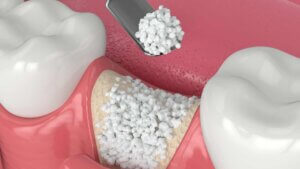
Dental Bone Graft
Dental Bone Graft What Is Dental Bone Graft? Dental bone grafting is a remarkable procedure designed to restore and enhance the underlying bone structure of
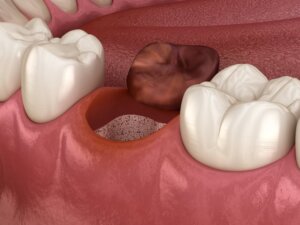
Dry Socket: Symptoms, Causes, Prevention & Treatment
Dry Socket: Symptoms, Causes, Prevention & Treatment What Is A Dry Socket? Dry socket is also called alveolar osteitis. After having regular tooth removal or
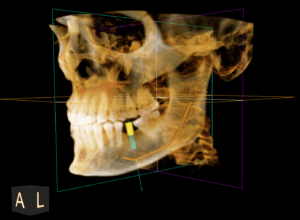
CBCT Scan
CBCT Scan What Is A CBCT Scan? Advanced imaging technologies have revolutionized the way dental professionals diagnose and treat various oral conditions. One such groundbreaking

Dental Pain Medication
Dental Pain Medication What Is Dental Pain Medication? Dental pain can range from a mild discomfort to intense throbbing, making even the simplest tasks unbearable.

